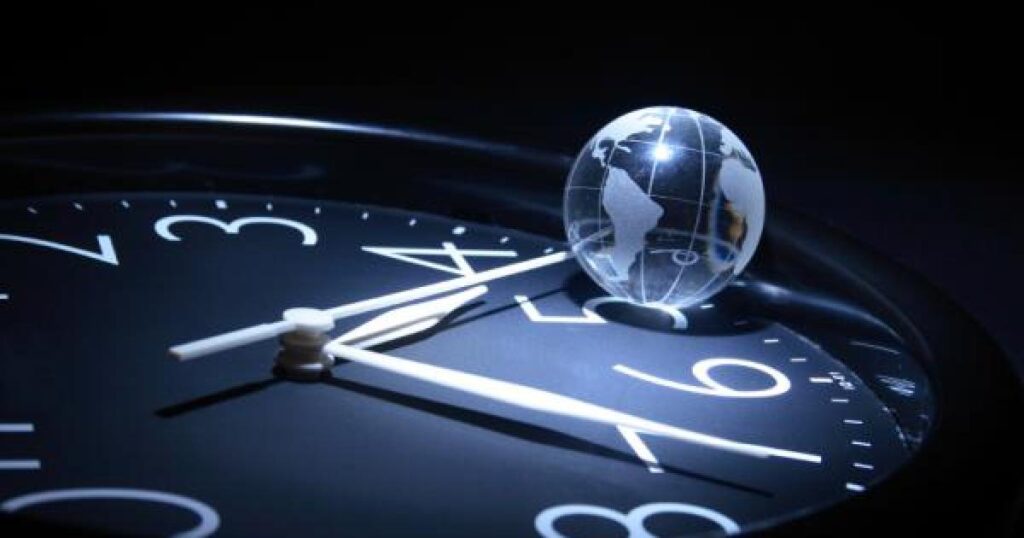A day on the earth consists of 24 hours. That is what we have known since our school days. But, recently something unusual happened that caused a Leap Second. Let’s understand in detail about this unusual activity and the leap second.
The Earth is spinning faster
Life after school has become very fast and tough, and the planet earth is also accompanying us in this. Recently, scientists have observed that the earth is spinning faster than its usual time. Due to this unusual rotation of the earth on its axis, we have a new record of the shortest day on the planet earth.
On June 29, 2022, Earth’s spin on its axis was completed in 1.59 milliseconds under 24 hours. A similar result was observed on July 26, which was 1.5 milliseconds short. This is not what has happened for the very first time. If we talk about the recent past, on July 19, 2020, the planet earth completed its day 1.47 milliseconds earlier than 24 hours.
In December 2020, the website Time and Date reported that during that year the Earth had experienced its 28 shortest days since scientists began measuring the length of a day with atomic clocks in the 1960s.

What are the effects of Faster Earth Rotation?
The biggest effect of the Faster Earth Rotation is on the Atomic Clocks. The other major effect this occurring can cause is to the communications systems within smartphones and computers that majorly use Network Time Protocol servers.
The atomic clocks are majorly used in GPS systems. Atomic Clocks needs to adjust this lost 1 second. Adjusting this negative leap second is a very tricky thing, and it may crash the entire Internet system. In 2012, due to this leap second issue, major online presences including Reddit, Mozzila, LinkedIn, StumbleUpon, and many other platforms, crashed.
Let’s understand the Leap Second in detail.
What is Leap Second?
The clocks available on the planet earth are designed considering the earth’s rotation-time on its axis is exactly 24 hours. But due to many reasons, the speed of the earth’s rotation changes slightly sometimes. It can speed up or slow down due to various reasons including natural geological events like earthquakes, tsunamis, volcanos, etc.
As the watches are designed considering the earth’s rotation as 24 hours, to keep both of them in sync we need to add one extra second to the Coordinated Universal Time (UTC). That extra second is known as Leap Second.
The leap second allows us to keep our clocks in sync with the earth’s natural clock. Leap second was first introduced in 1972 by the International Earth Rotation and Reference System Service. Since 1972, a total of 27 leap seconds have been added to the Coordinated Universal Time (UTC).
Negative Leap Seconds and Positive Leap Seconds
Leap seconds can be positive (1 second added to the schedule) or negative (1 second omitted). So far, we have only added leap seconds, which means all the leap seconds so far have been positive leap seconds. As the Earth’s rotation keeps accelerating, as we’ve explained earlier in this blog, the IERS may decide to announce the world’s first negative leap second at some point in the future.
Leap Seconds are generally announced 6 months in advance so everyone across the globe has enough time to prepare. But still, the Leap Second is very troublesome for IT infrastructures and the Internet.
How can a leap second crash the Internet?
Leap seconds cause a great problem for IT systems and the Internet, specifically the applications and services that require time synchronization with other systems in order to run smoothly.
When synchronizing with applications that have adjusted for leap seconds, systems that haven’t accounted for leap seconds can appear to be sending information from the future. So, a small mistake or missing leap second handling can lead to the global Internet crash, too.
Back in 2012, the leap second crashed the entire flight booking system. It also caused a major Internet outage as a number of platforms reported a glitch due to the leap second. These platforms include some big names like Reddit, Gawker, LinkedIn, Australian Airline Qantas, Stumbleupon, and many more.
Tech Giants want to put a full stop to the Leap Second
Tech giants including Meta (Facebook), Google, Amazon, and Microsoft want to put a full stop to the Leap Second. All these big institutions believe that Leap Second is more trouble than they’re worth. Not only these tech giants, but the US National Institute of Standards and Technology (NIST), its French equivalent (the Bureau International de Poids et Mesures or BIPM), and other premium organizations also want to get rid of the Leap Seconds.
Recently Meta explained in a blog post stating that, “We bump into problems whenever a leap second is introduced. And because it’s such a rare event, it devastates the community every time it happens. With a growing demand for clock precision across all industries, the leap second is now causing more damage than good, resulting in disturbances and outages.”
Google’s Special Technique to handle Leap Second
Google uses a technique known as “smeared time,” or a leap smear, to avoid probable critical issues related to leap seconds. In 2016, Google allowed anyone who wanted to use its NTP (Network Time Protocol) servers to help avoid issues.
For 10 hours before and after the leap second, Google’s NTP servers run clocks 0.0014 percent slower to account for a leap second without disrupting time-synchronizing apps and systems. The best part is that Google’s NTP servers are freely available through the Google Public NTP service.
Frequently Asked Questions (FAQs)
When was the last time Leap Second was added?
The last leap second was December 31, 2016.
When do they generally add Leap Second?
Generally, leap second is added on the last day of June or December.
Why are leap seconds not as frequent as leap years?
In response to climatic and geological events, the Earth’s rotation speed varies irregularly, causing leap seconds to occur irregularly. Hence, unlike leap years, leap seconds can not be added at frequent intervals.
Conclusion
That’s what the leap second is and how it affects the whole tech field. A small fraction of a second’s change in the earth’s rotation has such a big impact on our daily digital life. Do let us know in the feedback if this blog could provide some valuable information to you.




Very informative
In-depth analysis
Thanks
Thank you so much 🙂